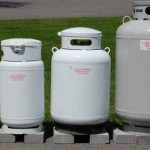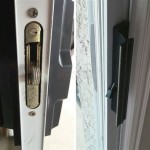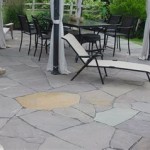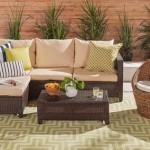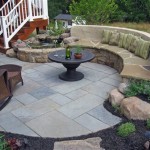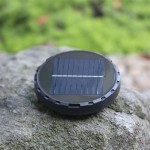```html
Waterproof Patio Cover Ideas: Extending Outdoor Living Spaces
A patio serves as an extension of the home, providing an area for relaxation, entertainment, and dining. However, inclement weather can significantly limit the usability of this valuable outdoor space. Investing in a waterproof patio cover ensures year-round enjoyment, regardless of rain, snow, or intense sun. This article explores various waterproof patio cover ideas, focusing on materials, designs, and installation considerations.
Understanding the Need for Waterproofing
The primary function of a patio cover is to protect the area from environmental elements. While some patio covers offer shade, waterproofing provides an additional layer of defense against rain and other forms of precipitation. Waterproofing prevents water damage to patio furniture, keeps the area dry and comfortable for use, and can even protect the structural integrity of the patio surface itself. Furthermore, a waterproof cover allows for the installation of outdoor appliances and electronics without the risk of damage from moisture.
Effective waterproofing requires careful consideration of materials and construction techniques. The cover must be able to withstand water pooling and prevent leaks, especially in areas prone to heavy rainfall or snow. Drainage systems are crucial for directing water away from the patio and preventing water damage to the surrounding landscape. The materials used should be durable, weather-resistant, and capable of maintaining their waterproof properties over time. Regular maintenance and inspection are also essential to identify and address any potential leaks or damage promptly.
Material Options for Waterproof Patio Covers
The choice of material significantly impacts the effectiveness and aesthetics of a waterproof patio cover. Several options are available, each offering unique advantages and disadvantages. Selecting the right material depends on factors such as budget, desired aesthetic, structural requirements, and local climate conditions.
Solid Polycarbonate Sheets: Polycarbonate is a durable, lightweight, and transparent thermoplastic polymer. Solid polycarbonate sheets offer excellent impact resistance and UV protection, making them a suitable choice for patio covers. They allow natural light to filter through, creating a bright and airy outdoor space while protecting against rain and harmful UV rays. Polycarbonate sheets are relatively easy to install and can be cut to size to fit various patio dimensions. However, they can be more expensive than some other options and may require a specialized cleaning solution to maintain their clarity.
Corrugated Metal Roofing: Corrugated metal roofing is a cost-effective and durable option for waterproof patio covers. It provides excellent protection against rain, snow, and sun. Metal roofing is available in various colors and finishes, allowing for customization to match the existing home architecture. It is also relatively lightweight and easy to install. However, metal roofing can be noisy during heavy rain and may require insulation to reduce noise levels and prevent condensation. Additionally, it can rust over time if not properly maintained.
Acrylic Sheets: Acrylic sheets, similar to polycarbonate, are transparent and durable plastics. They offer excellent clarity and UV resistance, making them a popular choice for patio covers. Acrylic sheets are lighter than glass, making them easier to handle and install. They are also more resistant to shattering than glass, enhancing safety. However, acrylic sheets are more prone to scratching than polycarbonate and may require special care during cleaning. They are also generally more expensive than polycarbonate.
Waterproof Fabric Canopies and Awnings: Fabric canopies and awnings provide a flexible and aesthetically pleasing option for waterproof patio covers. These covers are typically made from durable, water-resistant fabrics such as acrylic or polyester. They are available in various colors, patterns, and styles, allowing for customization to match the outdoor decor. Fabric canopies and awnings can be retractable, providing the option to adjust the amount of shade and sunlight as desired. However, fabric covers may require more maintenance than solid materials and are more susceptible to damage from strong winds or heavy snow. Regular cleaning and treatment with a waterproofing sealant are necessary to maintain their waterproof properties.
Glass Roofing: Glass roofing provides an elegant and high-end option for waterproof patio covers. It offers excellent light transmission and a clear view of the sky. Tempered or laminated glass is typically used for patio covers to provide strength and safety. Glass roofing can be incorporated into various designs, including fixed roofs, retractable roofs, and skylights. However, glass roofing is more expensive than other options and requires professional installation. It can also be heavy, requiring a robust support structure. Regular cleaning is necessary to maintain its clarity and prevent the buildup of dirt and debris. Furthermore, considerations for heat gain and potential glare may be necessary.
Design and Structural Considerations
Designing a waterproof patio cover requires careful consideration of structural integrity, drainage, and aesthetic integration with the existing home. The design should ensure adequate support for the cover material, proper water runoff, and a visually appealing addition to the outdoor space.
Structural Support: The structural support for a waterproof patio cover must be robust enough to withstand the weight of the cover material, as well as any potential snow or wind loads. Posts, beams, and rafters should be made from durable materials such as treated lumber, steel, or aluminum. The size and spacing of the structural members should be determined based on the size of the patio cover, the type of cover material, and local building codes. Proper footings and foundations are essential to ensure the stability of the structure.
Drainage Systems: Effective drainage is crucial for preventing water damage and ensuring the longevity of the patio cover. The design should incorporate a slope to allow water to flow away from the house and off the cover. Gutters and downspouts should be installed to collect and direct the water away from the patio and surrounding landscape. The size and capacity of the drainage system should be adequate to handle heavy rainfall. Regular cleaning and maintenance of the gutters and downspouts are essential to prevent clogs and ensure proper water flow.
Attachment and Integration: The method of attaching the patio cover to the house or other existing structures should be carefully considered. The attachment should be secure and weatherproof to prevent leaks and damage to the house. Flashing should be installed around the perimeter of the cover to seal the gaps between the cover and the house. The design should integrate seamlessly with the existing architecture of the house, enhancing its overall aesthetic appeal. Considerations should be given to the style, color, and materials used in the construction of the patio cover.
Additional Features: Incorporating additional features such as lighting, fans, and heating elements can enhance the functionality and comfort of the waterproof patio cover. Lighting can provide illumination for nighttime use, while fans can provide ventilation and cooling. Heating elements can extend the usability of the patio during colder months. The electrical wiring for these features should be installed by a qualified electrician and should be protected from the elements. Furthermore, consider the addition of privacy screens or curtains to create a more secluded and intimate outdoor space.
Installation Methods and Best Practices
Proper installation is essential for ensuring the effectiveness and longevity of a waterproof patio cover. The installation process should be carried out by experienced professionals or by homeowners with sufficient knowledge and skills. Following best practices during installation can prevent leaks, structural issues, and other problems that can compromise the performance of the cover.
Professional Installation: Hiring a professional contractor to install the patio cover can ensure that the job is done correctly and safely. Professional contractors have the experience, tools, and expertise to handle all aspects of the installation process, from obtaining permits to completing the final touches. They can also provide valuable advice on design, materials, and maintenance. However, professional installation can be more expensive than DIY installation.
DIY Installation: Installing a patio cover yourself can save money, but it requires careful planning, preparation, and execution. Before starting the project, it is essential to obtain the necessary permits and to understand local building codes. The homeowner should also have the necessary tools and skills to complete the job safely and effectively. Following the manufacturer's instructions and consulting with experts can help to ensure a successful DIY installation.
Waterproofing Techniques: Proper waterproofing techniques are essential for preventing leaks and ensuring the integrity of the patio cover. Flashing should be installed around all edges and seams to seal the gaps between the cover and the surrounding structures. Sealants and caulking should be used to fill any cracks or gaps that could allow water to penetrate. The cover material should be lapped correctly to prevent water from seeping underneath. Regularly inspecting and maintaining the waterproofing measures can help to prevent problems and extend the life of the cover.
Safety Precautions: Safety should be a top priority during the installation process. Wear appropriate safety gear, such as gloves, eye protection, and a hard hat. Use ladders and scaffolding safely and follow all safety guidelines. Be aware of potential hazards, such as electrical wires and overhead obstacles. If you are not comfortable working at heights or with power tools, it is best to hire a professional contractor.
```
Diy Pergola Cover Ideas 7 Ways To Protect Your Patio From Sun And Rain

Diy Pergola Cover Ideas 7 Ways To Protect Your Patio From Sun And Rain With Roof Covered Outdoor Living Space

Diy Pergola Cover Ideas 7 Ways To Protect Your Patio From Sun And Rain

Diy Pergola Cover Ideas 7 Ways To Protect Your Patio From Sun And Rain

Cover That Patio Trellis Backyard Pergola Outdoor

How To Make My Pergola Waterproof Ideas

14 Modern Pergola Roof Cover Ideas For Your Patio

Modern Pergola Roof Ideas For Maximum Shelter Style

11 Patio Cover Ideas Anyone Can Diy The Garden Glove

Diy Pergola Cover Ideas 7 Ways To Protect Your Patio From Sun And Rain
Related Posts

